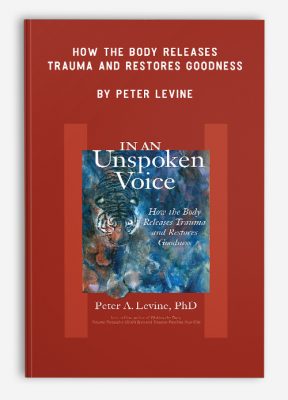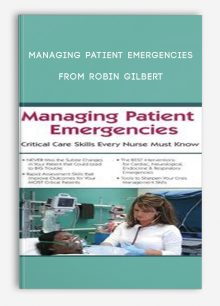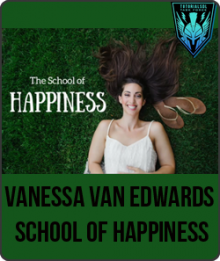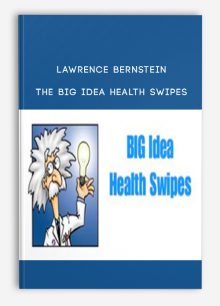How the Body Releases Trauma and Restores Goodness by Peter Levine
$179.99 $53.00

How the Body Releases Trauma and Restores Goodness by Peter Levine

**More information:
Get How the Body Releases Trauma and Restores Goodness by Peter Levine at Salaedu.com
Description
International trauma expert and author, Peter A. Levine, Ph.D. will teach you how sensation-based treatment (as opposed to emotional or rational-based treatment) can be effective for trauma treatment. He discusses the important principles in successful trauma treatment, and uses his own successful renegotiation of a personal traumatic event as an example.
Representing the full scope of his life’s work, Dr. Levine discusses the evolutionary underpinnings of trauma. This recording includes an in-depth review of how trauma is related to the ethnological concept of tonic immobility, as well as the roadmap of the Polyvagal system – a fascinating neurophysiological model for understanding how we shift between the states of fight-or-flight, shutdown, and social engagement. Dr. Levine provides simple containment tools to help you develop your awareness of these state changes in order to more effectively engage your client in trauma therapy.
Child Development: The Signs of Trauma in Each Developmental Period:
- Pre-Natal
- Hormonal interactions between mother and child
- Birth Stress
- Year One
- Safety, affection and containment
- Proprioceptive development
- The Dopamine System
- The space to explore one’s effect on the world
- The formation of a self that is different from Mom and Dad
- Testing boundaries
- Age 3-5
- The Biology and balance of shame
- The importance of shame in society
- The signs of overshaming
- The signs of undershaming
- The initial forays into sexuality
- The importance of flirting
- How these sames stages replay themselves out in later life
- The initial forays into sexuality
The Naturalistic Mechanisms of Trauma
- Understanding our primary survival tactics and how they play out in the body: Flight, fight, freeze and collapse
- 500 million years of evolution: Our Polyvagal underpinnings
- How the Dorsal Vagal System is related to shutdown and collapse
- Fight or flight: Sympathetic/adrenal System mobilization, Returning to our Mammalian birthright: The Ventral vagal system and social engagement
- How we get “stuck”
- Tonic immobility – The fallback to freeze
- Freeze couples with Fear
- Dissociation
- Bracing and terror
- Euphoric dissociation
- Collapse
- Somatic and emotional – syndromes and complexes
- Emotional – anxiety, depression
- Somatic – chronic pain, fibromyalgia
- Autonomic – migraines, irritable bowel
Resolving Traumatic Reactions
- The importance of “Bottom-Up” processing
- The Paul MacLean’s Triune Brain
- In an Unspoken Voice
- Somatic Experiencing©
- Renegotiation vs. Reliving
- Restoration of self-regulation
- Trauma isn’t about the event, but the body’s inability to process and integrate the nervous system charge
- The importance of developing a felt sense
- The nine basic stages of trauma treatment
- Containment of strong sensation and emotion
- Pendulation – The dual opposites of sensation
- Titration – going gradually
- Completion
- Renegotiation of active for passive responses
- Simple exercises that you can use in your practice
Spirituality and Trauma
- Trauma as one of the 4 avenues to enlightment
- Lessons from the Kundalini
- A feeling of “okayness”, wholeness and trust in the world
- And other side effects of effective trauma treatment
- The importance of maintaining balance in one’s life
Lifestyle online course
More information about Lifestyle:
Lifestyle is the interests, opinions, behaviours, and behavioural orientations of an individual, group, or culture.
The term was introduced by Austrian psychologist Alfred Adler with the meaning of “a person’s basic character as established early in childhood”.
For example, in his 1929 book “The Case of Miss R.”. The broader sense of lifestyle as a “way or style of living” has been documented since 1961.
Lifestyle is a combination of determining intangible or tangible factors.
Tangible factors relate specifically to demographic variables, i.e. an individual’s demographic profile,
whereas intangible factors concern the psychological aspects of an individual such as personal values, preferences, and outlooks.
A rural environment has different lifestyles compared to an urban metropolis.
Location is important even within an urban scope.
The nature of the neighborhood in which a person resides affects the set of lifestyles available
to that person due to differences between various neighborhoods’ degrees of affluence and proximity to natural and cultural environments.
For example, in areas near the sea, a surf culture or lifestyle can often be present.
More information about Fitness:
Regular exercise and physical activity promotes strong muscles and bones. It improves respiratory, cardiovascular health, and overall health.
Staying active can also help you maintain a healthy weight, reduce your risk for type 2 diabetes, heart disease, and reduce your risk for some cancers.
Moderate aerobics exercises 3 times a week for 30 minutes can reduce cancer risk Cancer-based exercises provide relief to the patient during
cancer treatment There are many benefits to exercising. But it’s even more beneficial for cancer patients. This has been proven in research published in the medical journal ‘Cancer Journal for Clinicians’.
More information about Medical:
Medicine is the science and practice of establishing the diagnosis, prognosis, treatment, and prevention of disease.
Medicine encompasses a variety of health care practices evolved to maintain and restore health by the prevention and treatment of illness.
Contemporary medicine applies biomedical sciences, biomedical research, genetics, and medical technology to diagnose, treat, and prevent injury and disease,
typically through pharmaceuticals or surgery, but also through therapies as diverse as psychotherapy, external splints and traction, medical devices, biologics, and ionizing radiation, amongst others.
Medicine has been around for thousands of years, during most of which it was an art (an area of skill and knowledge) frequently having connections to the religious and
philosophical beliefs of local culture. For example, a medicine man would apply herbs and say prayers for healing, or an ancient philosopher and physician would apply bloodletting according to the theories of humorism.
In recent centuries, since the advent of modern science, most medicine has become a combination of art and science (both basic and applied, under the umbrella of medical science).
While stitching technique for sutures is an art learned through practice, the knowledge of what happens at the cellular and molecular level in the tissues being stitched arises through science.
Be the first to review “How the Body Releases Trauma and Restores Goodness by Peter Levine” Cancel reply
Related products
HEALTH - FITNESS - LIFESTYLE - MEDICAL
HEALTH - FITNESS - LIFESTYLE - MEDICAL
HEALTH - FITNESS - LIFESTYLE - MEDICAL
HEALTH - FITNESS - LIFESTYLE - MEDICAL
Complete Certified Professional Coach Online Course from Berry Fowler
HEALTH - FITNESS - LIFESTYLE - MEDICAL
HEALTH - FITNESS - LIFESTYLE - MEDICAL
HEALTH - FITNESS - LIFESTYLE - MEDICAL
HEALTH - FITNESS - LIFESTYLE - MEDICAL










Reviews
There are no reviews yet.